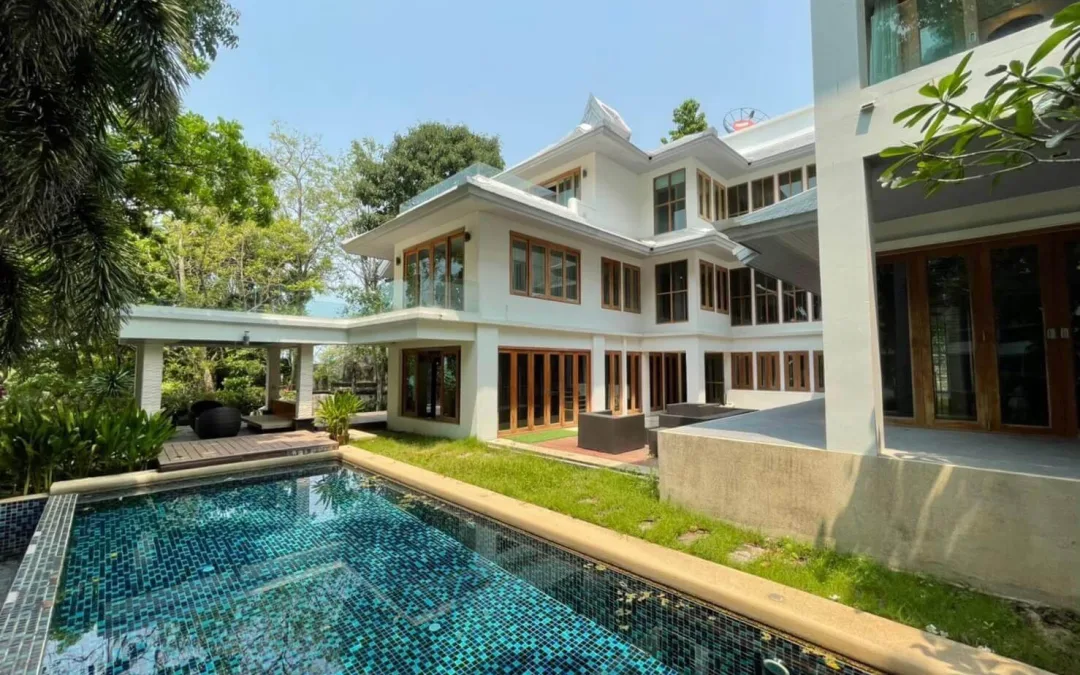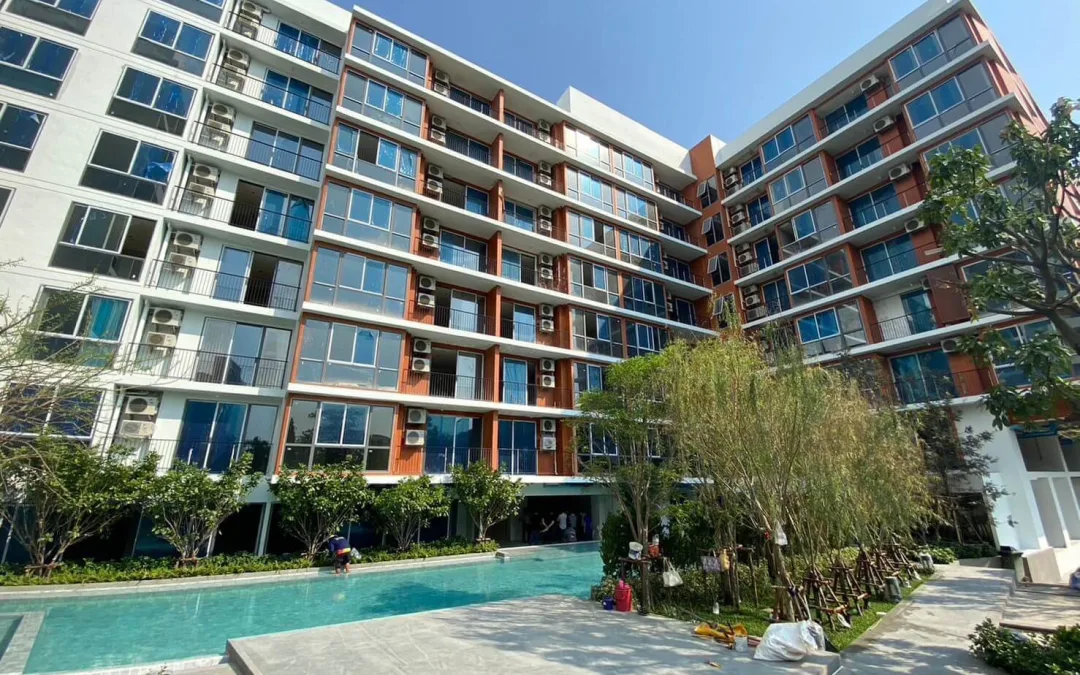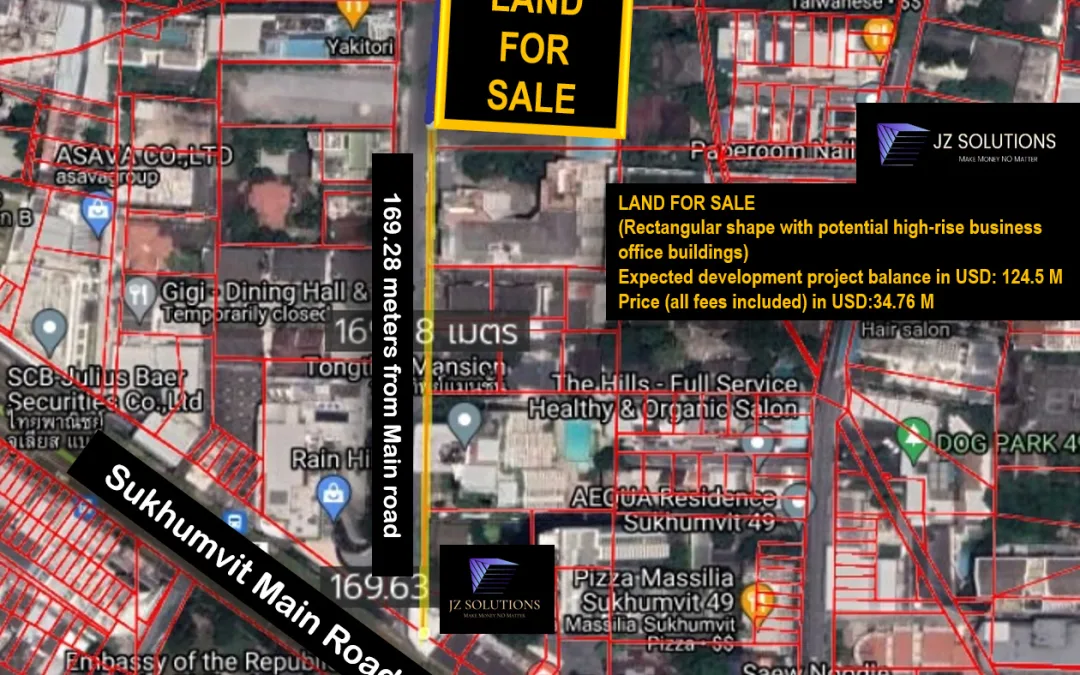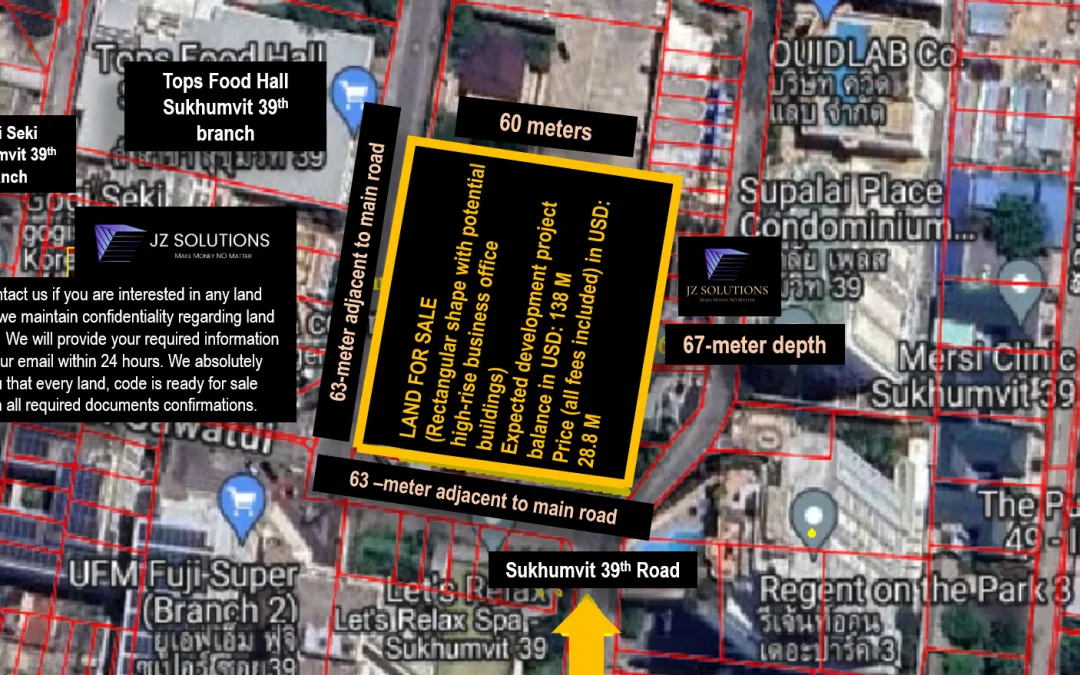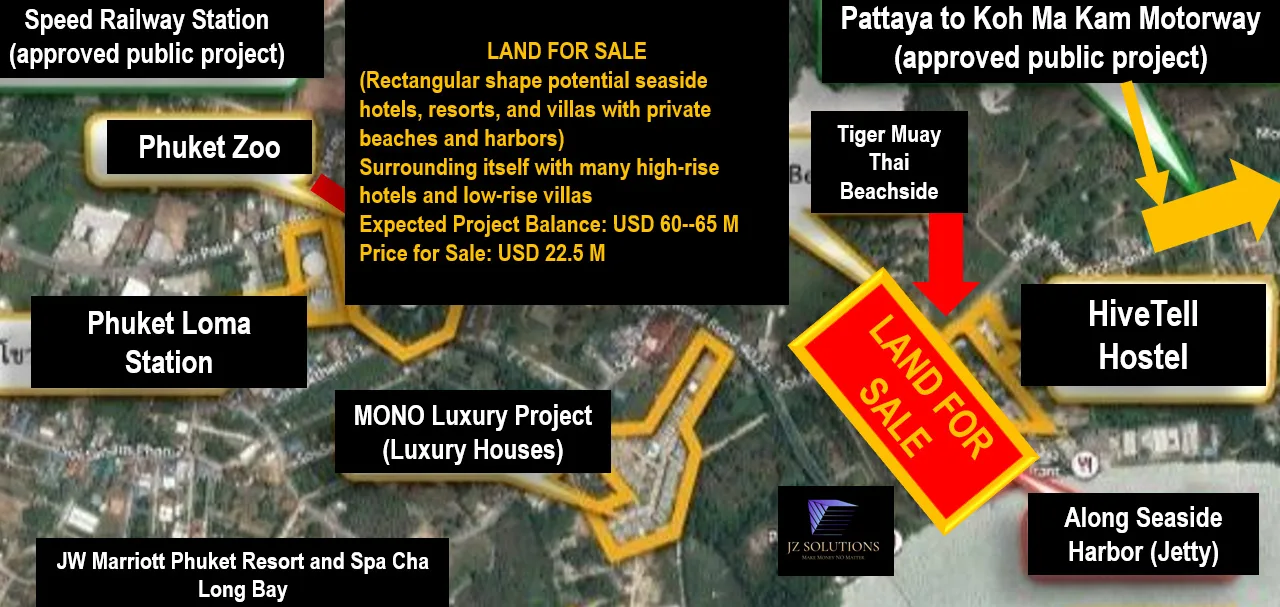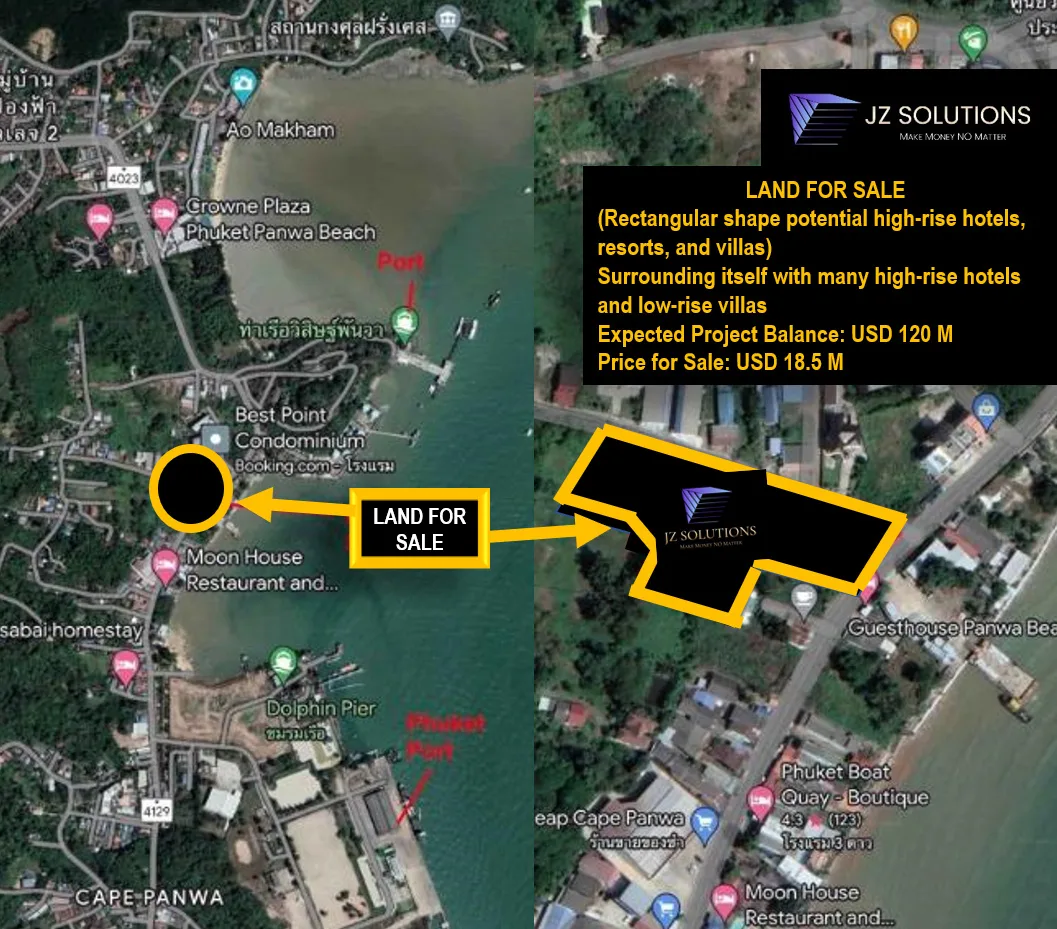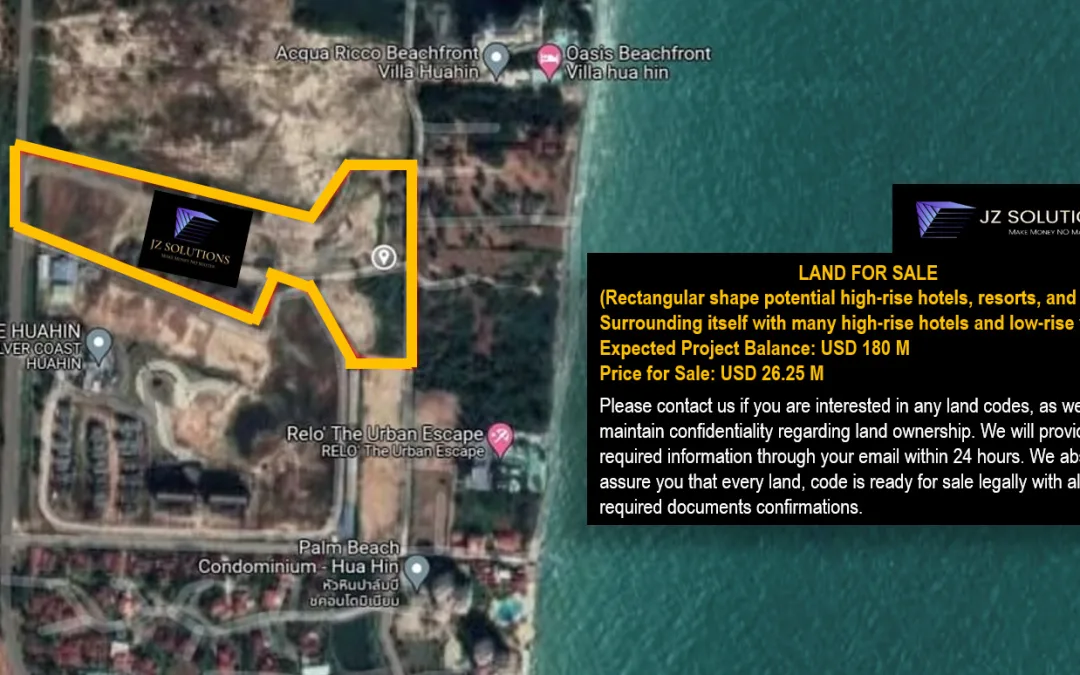Pattaya 7
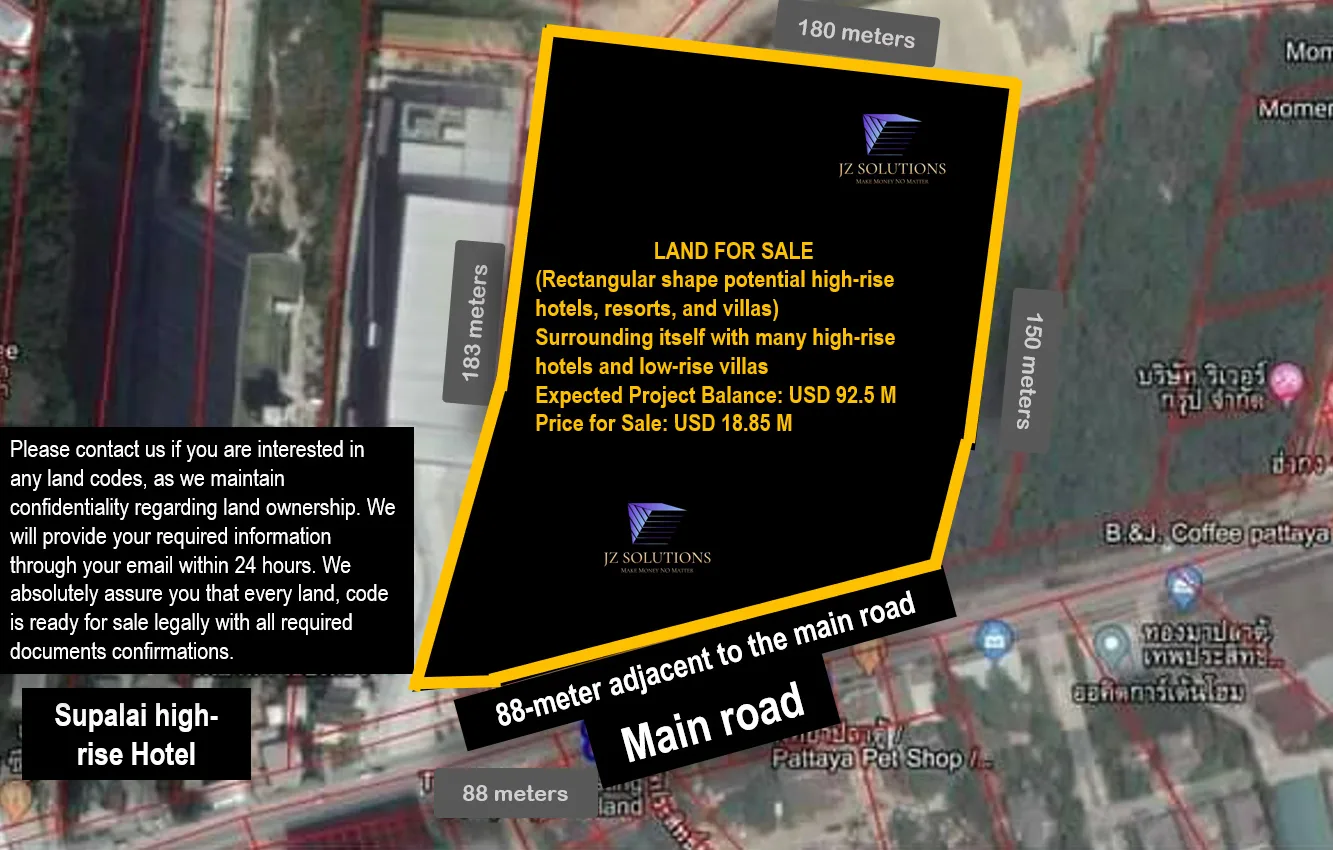
Location : Pattaya
Landmarks : Center of Pattaya city
Area (approximately in Acre) : 3.95
Shape : Rectangular
Adjacent distance along the private beach : None
Scenenario feasibilities : High-rise hotel resort and Spa
Price (all fees included) : USD 18.85 M
Expected development project balance in USD : 92.5 M

Pattaya is a renowned destination that captures the hearts of tourists from around the world. With over 20 major golf courses within a 50-kilometer radius of the city, easily accessible by public transportation, the city shines as a global destination for major golfing tournaments. For those not interested in golf, Pattaya also offers stunning beaches, shopping, seafood options, and the nearby accessible island of Ko Lan, providing a chance to enjoy one of Thailand’s beautiful islands without the need for a plane ride.
It is common to see colorful signs displaying names of cities or landmarks around Thailand’s destination points. The Pattaya City sign, located on Pratumnak Hill between South Pattaya and Jomtien, is one of the largest in the Kingdom. This bright orange sign stands out from any part of Pattaya Beach, serving as a captivating backdrop for panoramic or aerial photos. The sign is more than just eye appeal – it is a unique destination that can be experienced up close. Positioned below the sign is a large platform where people can watch the sunset and enjoy a unique view of the vibrant beach city and local nightlife.
The scenic viewpoint below the iconic Pattaya City sign offers breathtaking views of the Gulf of Thailand, Pattaya Beach, Ko Lan, and Ban Hai Pier. Visitors can also witness the city’s vibrant public skatepark, bustling with residents partaking in group exercises, skateboarding, and socializing. Reaching the viewpoint is simple, whether by taking a free shuttle bus from Ban Hai Pier, hiring a motorcycle taxi, or getting a ride to the top by pointing to the sign. The Pattaya City sign is open 24 hours a day, welcoming visitors to experience its beauty at any time. Whether in the early morning or late evening, a visit promises unforgettable sights, though large crowds are expected at all times.
Shenzhen Genzon Technology Innovation Center | by AEDAS
The Aedas building design is inspired by the Chinese concept of “flowers blooming with wealth”. This concept is reflected in the architectural outline, which features a coiling volume resembling the Shenzhen flower bougainvillea. The residential apartments and community-supporting functions are located on the west side, while retail, office, and five-star hotels are situated on the east side due to the bifurcated plot.
The Genzon Technology Innovation Center in Shenzhen’s Nanshan District includes offices that encourage a new way of working, luxurious hotel facilities, and an exciting shopping experience. The project will be a key point on the “Silicon Valley Avenue” connecting important areas of Shenzhen’s high-tech industries.
The diverse functions on the east side are distributed among four towers. The cross-shaped layout not only meets the requirements for building height but also maximizes views and provides ample public space.
The seamless connection of the four towers through a circular aerial bridge, featuring interactive spaces like an open-air restaurant and an infinity swimming pool, establishes a bold building form that becomes an iconic city landmark and a vital center in the innovation hub of Shenzhen. The project was designed by Aedas Global Design Principal, Dr. Andy Wen, and Executive Director Dong Wei Wang.
Yangliping Performing Arts Center
The Yangliping Performing Arts Center in Dali, designed by studiozhupei, is nestled between the majestic Cang mountain chain and the expansive Lake Erhai. Drawing inspiration from this powerful natural setting, the center’s cantilevered rectangular roof spans a landscape of fluid indoor and outdoor spaces. This design reflects the natural forms of mountains and valleys, symbolizing the Chinese principle of yin and yang. It creates a harmonious interaction between the built environment and the natural landscape, with organic-shaped hills and sunken spaces transforming into a natural garden that extends into the public theatre, enhancing the experiential quality for visitors.
Photograph: Jin Weiqi

